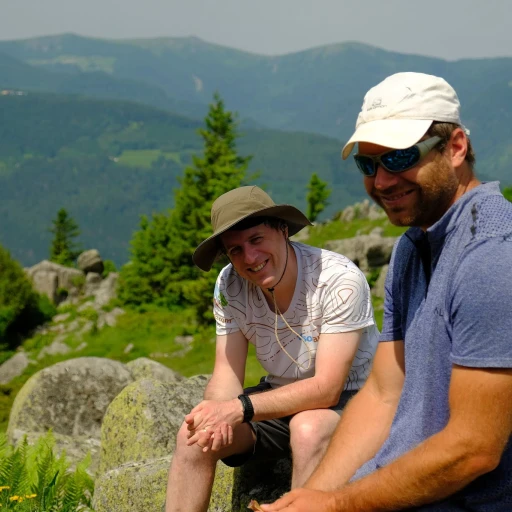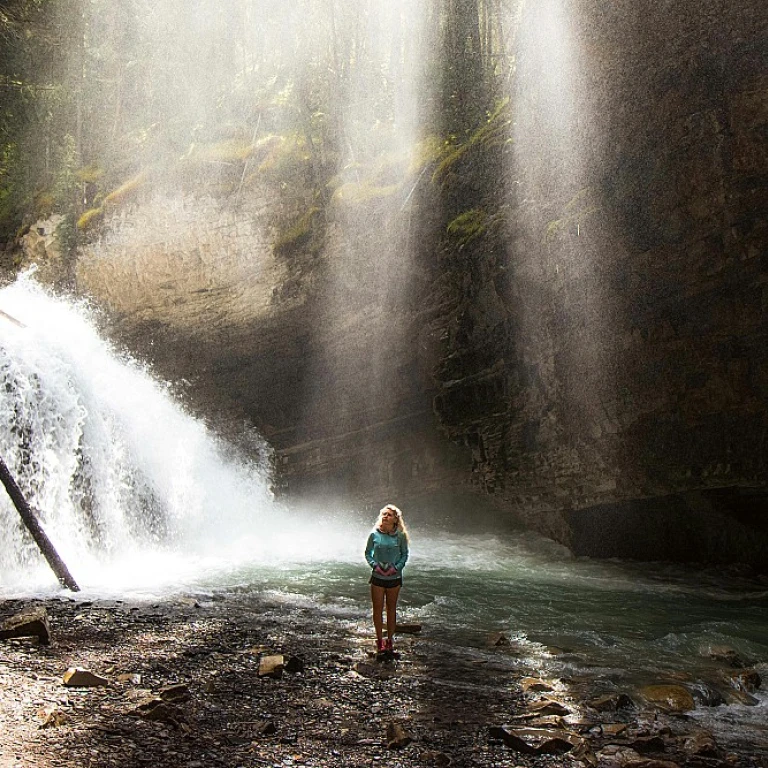The Allure of Mont Blanc: What Makes It Special?
Embracing the Majesty of the Alps
Nestled in the heart of the European Alps, Mont Blanc stands as a majestic beacon for hikers and trekkers from across the globe. Towering at an impressive elevation, it is not only the highest peak in the Alps but also a symbol of natural beauty and adventure. The allure of Mont Blanc lies in its breathtaking vistas, challenging terrains, and diverse landscapes, offering an unparalleled hiking experience that draws both seasoned adventurers and enthusiastic beginners alike.
A Journey Through Diverse Landscapes
What sets the Mont Blanc circuit apart from other trails is the remarkable diversity of environments it traverses. From lush alpine meadows and dense forests to rugged cliffs and serene lakes, each step of the journey is a gateway to the Earth's natural wonders. This diversity requires careful planning (as detailed in the route and itinerary) to ensure hikers enjoy each unique segment to its fullest.
An Adventure Steeped in Culture and History
Beyond its natural beauty, the Mont Blanc trek offers a cultural and historical immersion. Along the trail, hikers encounter the traditions of three nations—France, Italy, and Switzerland—each bringing its unique charm and hospitality. Stops in quaint mountain villages provide a glimpse into the lives of those who have thrived in these challenging environments for centuries.
For those inspired to explore more of the region, the surrounding French Alps offer a myriad of additional breathtaking adventures. Consider expanding your hiking portfolio with the
top hikes in the French Alps, showcasing the incredible diversity and beauty this region has to offer.
Planning Your Tour: Route and Itinerary
Mapping Out Your Mont Blanc Experience: routes & itinerary tips
Embarking on the picturesque journey around the iconic Mont Blanc requires careful planning to ensure that you capture the breathtaking landscapes and challenging trails. This renowned trek, traversing through France, Italy, and Switzerland, is a highlight for many hikers. In order to make the most out of your adventure, consider the various routes and their unique features.
One popular approach to begin the trek is from the charming village of Les Houches, France. From there, a counter-clockwise direction provides a gradual introduction to the itinerary, gradually increasing in challenge and altitude. This method allows for acclimatization, making those exhilarating high-altitude passes more manageable as you make your way to Courmayeur, Italy, and beyond.
Your plan can include the classic full circuit, which typically takes 10 to 12 days, or the shorter, more focused options, perfect for those seeking a briefer experience. Each segment of the tour offers distinct scenery and encounters, from lush green valleys to stark glacial vistas.
When planning your stops, aim for daytime arrivals to allow for exploration of local cultures and cuisines. The diversity of the route means that you're never too far from civilization, allowing stops in charming refuges, hotels, and auberges to rest and refuel, a subject we'll explore further in upcoming sections.
Finally, assess the seasonal weather and trail conditions to optimize your experience, ensuring you are prepared for variations. From late June to early September, conditions are typically at their best, offering longer daylight hours and more predictable weather patterns. Researching the particulars of each segment ensures a safe and unforgettable journey around the majestic Mont Blanc, truly a hiker's dream.
Day-by-Day Highlights: What to Expect
Embarking on an Epic Journey: Daily Highlights
The journey around the Mont Blanc massif is nothing short of spectacular, offering unparalleled views and a unique challenge each day. This section will guide you through what to anticipate as you traverse this iconic trail.
Day 1: Les Houches to Les Contamines
Your adventure kicks off in Les Houches, a charming village that offers a gentle start to acclimatize to the hike's demands. The path meanders through lush forests and quaint hamlets, setting the tone for the breathtaking vistas to come. Don’t miss taking a moment at the Col de Voza, where the views begin to open up, offering glimpses of what lies ahead.
Day 2: Les Contamines to Les Chapieux
Prepare for a day of diverse terrains, as you'll traverse lush meadows and stunning alpine landscapes. As you ascend to the Col du Bonhomme, the exhilarating climb is rewarded with panoramic views that will leave you awestruck. Be sure to rest and enjoy the peaceful surroundings—this is a moment to savor.
Day 3: Les Chapieux to Courmayeur
Crossing into Italy, the descent into Courmayeur is a highlight for many. The trail offers dramatic views down into the valley, framed by soaring peaks and glaciers. This lively town is a perfect place to pause and enjoy some authentic Italian cuisine, a well-deserved treat after a long day on the trail.
As you continue your trek around Mont Blanc, you'll find each day offers something new and exciting, with the opportunity to
experience the thrill of pristine nature and cultural richness at every turn. Prepare to be captivated by the ever-changing backdrop and the sense of accomplishment that comes with each step.
Accommodation and Dining: Where to Rest and Refuel
Resting and Dining Along the Trail
After a long day of trekking through the breathtaking landscapes outlined in your itinerary, finding the perfect spot to rest and refuel becomes essential. The Tour of Mont Blanc offers a variety of accommodation options to suit every hiker's preference, from rustic mountain huts to cozy guesthouses.
Mountain Huts: A Rustic Experience
For those seeking an authentic alpine experience, mountain huts, known as "refuges," provide a unique opportunity to connect with fellow hikers. These huts are strategically located along the trail, offering basic amenities like shared dormitories and communal dining. Meals are often hearty and filling, perfect for replenishing your energy for the next day's adventure. It's advisable to book these huts in advance, especially during peak season, to ensure you have a spot.
Guesthouses and Hotels: Comfort and Convenience
If you prefer a bit more comfort after your day's hike, guesthouses and hotels are available in many of the charming villages along the route. These accommodations offer private rooms and a more extensive range of amenities, including hot showers and Wi-Fi, providing a perfect blend of comfort and convenience. Many of these establishments serve delicious local cuisine, allowing you to savor the flavors of the region.
Dining Options: Savoring Local Flavors
Dining along the Tour of Mont Blanc is an experience in itself. From traditional Savoyard dishes like fondue and raclette to Italian pasta and Swiss chocolate, the trail offers a delightful culinary journey. Many mountain huts and guesthouses include meals in their accommodation packages, but there are also charming restaurants and cafes in the villages where you can indulge in local specialties.
As you plan your adventure, consider your accommodation and dining preferences as part of your overall route and itinerary strategy. Whether you choose the communal atmosphere of a mountain hut or the comfort of a guesthouse, the Tour of Mont Blanc ensures you'll find a welcoming place to rest and recharge each night.
Guided vs. Self-Guided: Choosing Your Adventure
Guided Hikes: Expert Knowledge and Companionship
Opting for a guided tour along the Tour of Mont Blanc trail can provide you with an enriching experience filled with expert insights and the ease of having logistics managed for you. Guided tours are led by knowledgeable trip leaders who not only ensure your safety but also share fascinating details about the region’s unique flora, fauna, and history. This can significantly enhance your journey, especially if it's your first time tackling such an iconic trail. Additionally, going with a group can foster camaraderie as you bond with fellow hikers over shared experiences and scenic vistas.
Self-Guided Adventures: Freedom and Flexibility
For those who crave independence, a self-guided trek may be the preferable option. This format allows you to tailor your itinerary, setting your own pace and deciding which aspects of the trail you'd like to linger on. While you forego the expert insights of a guide, ample resources, such as detailed maps and guidebooks, help you navigate the tour effectively. It also allows for a more personal experience where you can immerse yourself fully in the natural splendor of the area without the constraints of a group schedule.
Consider the Season and Your Experience Level
When choosing between guided and self-guided tours, consider both the time of year and your own hiking experience. The Tour of Mont Blanc varies in difficulty depending on the season, with summer offering relatively easier conditions. Less experienced hikers might find reassurance in a guided tour during more difficult seasons, while seasoned trekkers may relish the challenge of a self-guided hike.
Ultimately, the choice between a guided or self-guided hike depends on your personal preferences and what you hope to gain from the experience. Whether you seek camaraderie and guidance or independence and self-direction, either option offers the chance to fully engage with the wonders of Mont Blanc's majestic landscape.
Getting There and Around: Transportation Tips
Navigating to Your Adventure Start
Embarking on the exhilarating circuit adjacent to Mont Blanc necessitates a bit of planning when it comes to transportation. Whether you're flying in from afar or taking a scenic drive, getting to one of the trailheads marks the beginning of your odyssey.
International Gateway
If you're arriving from overseas or distant locales, the Geneva International Airport in Switzerland is the most convenient entry point. From there, it's only an hour’s drive to Chamonix, one of the primary gateway towns for this alpine journey.
Railway Routes
For train enthusiasts, robust rail connections throughout Europe can bring you to the base of Mont Blanc with ease. Direct services link major cities to nearby destinations such as Geneva or Martigny, from where further regional train or bus options can ferry you to trail hubs like Chamonix and Courmayeur.
On the Road
Driving offers increased flexibility, and renting a vehicle might appeal to those keen to explore at their own pace. Ensure to check parking facilities at your chosen starting point; Chamonix, for instance, boasts several long-term parking options convenient for multi-day hikes.
Local Transit and Shuttles
For those already in the area or arriving by train, local buses and shuttle services regularly operate between towns. During peak hiking season, many services cater specifically to hikers, easily connecting the dots for your Mont Blanc journey.
In previous sections, we've discussed the magnetism of this alpine region and how to map out your days on the trail. Regardless of your travel method, the moment you set foot on this iconic path, you'll be rewarded with the breathtaking vistas and an unforgettable trekking experience.

